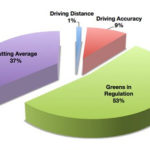The “Hit” Mentality
Have our attempts to develop a golf swing by trying to “hit” the ball actually inhibited our journey?
Think about the first time you ever tried to hit a golf ball.
It’s likely you had no clues about how to hold the club properly, how to stand or where to place the ball in relation to “stance” or alignment. You also had no preconceived notions on how to swing the club but rather there was an intent, make the club touch the ball somehow. It may have taken a few swings, but finally you “hit” the ball. Objective achieved, pattern in development.
Next we realized just rolling the ball along the ground isn’t enough, we have to get the ball in the air. More efforts, more errors, some success. If you were trying to “lift” the ball or get “under” the ball, you started with an incorrect premise and developed improper techniques based upon faulty logic, or rather not understanding the design of the tool. Once contact and lift were achieved, the snowball started rolling down the hill. You began searching for distance and directional control with an improper swing based on again, not understanding the tool.
Let’s consider how a golf club is designed. Every club has a built in loft, this obviously gets the ball airborne so that we don’t have to spend all day rolling the ball across the ground. Every club also has a face angle that points the ball in a direction according to the loft, so a directional component is already taken care of. So any golf club that we choose to swing, the club has already solved two problems, elevation and direction.
The job of the golfer then is already much simpler, we only need to provide a velocity and a direction to the mass of the club head. Perhaps most of the problems we face with our swings are due to previous efforts to solve two problems that were never real issues?










